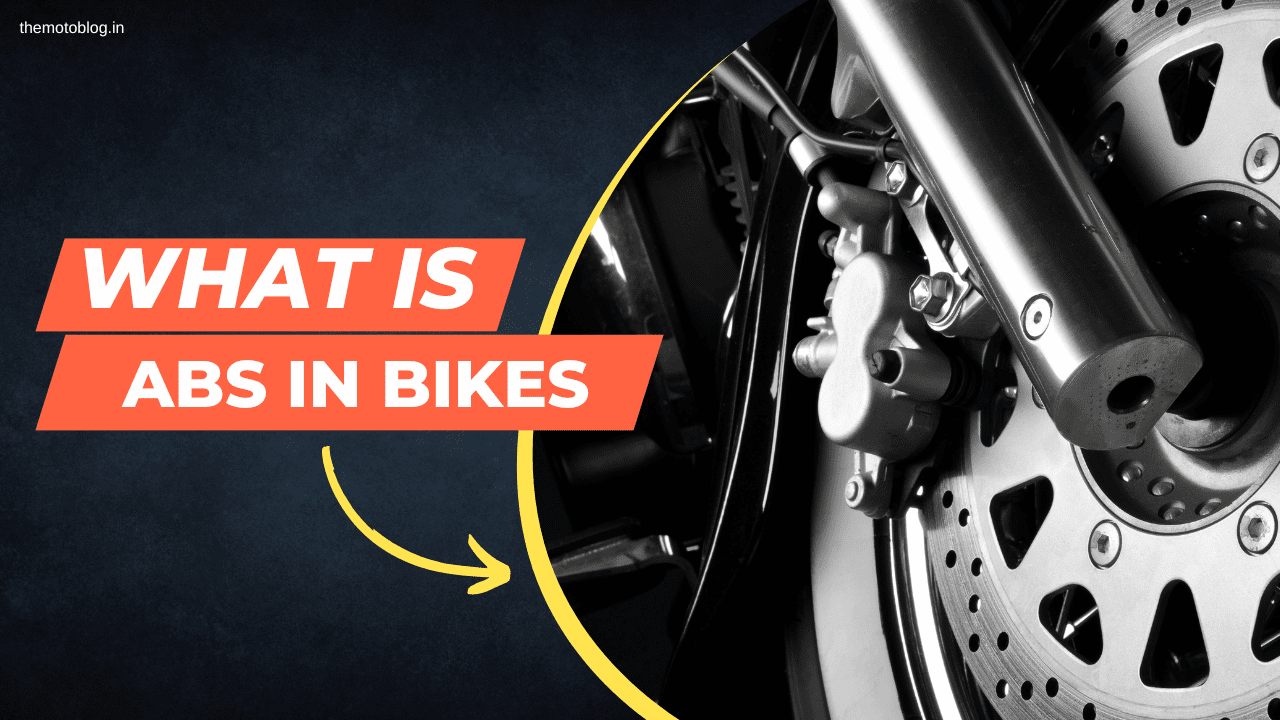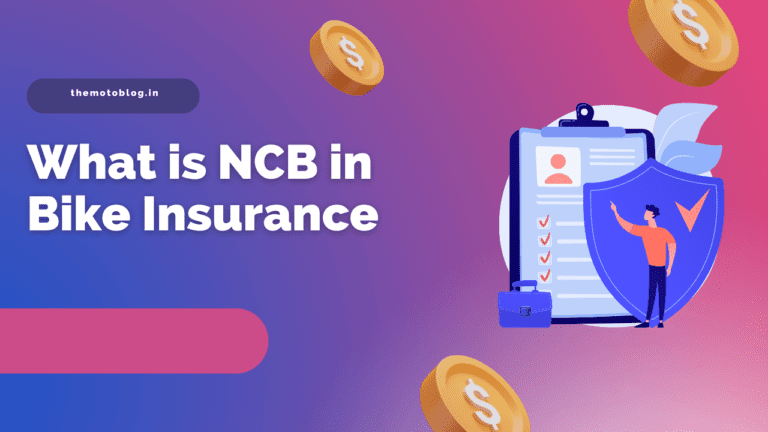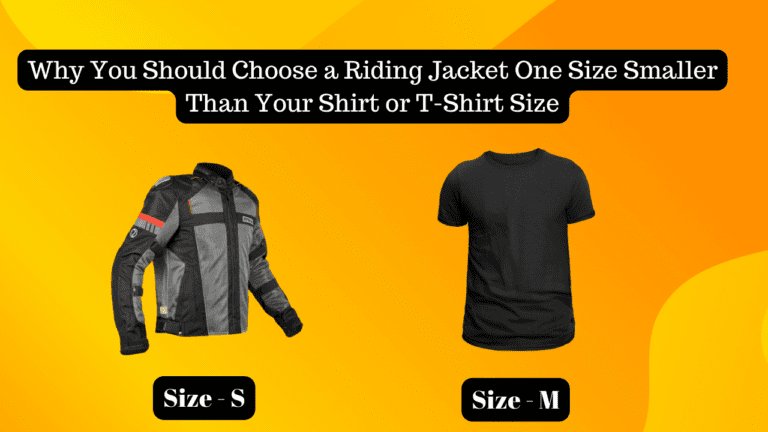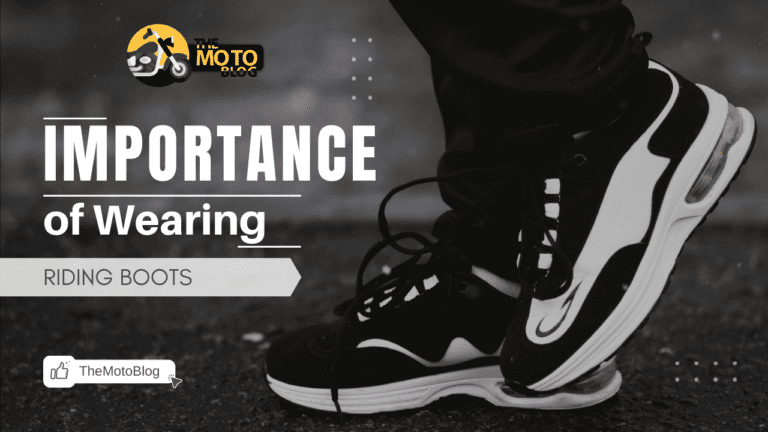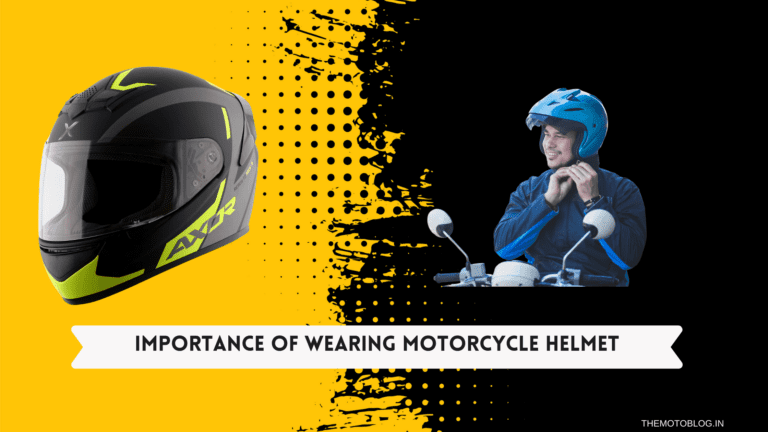Unveiling the Mystery of ABS in Motorcycles
Riding a motorcycle can be an exhilarating experience, but it can also be dangerous. Motorcycles lack the safety features of cars, such as seat belts and airbags, and are more vulnerable to accidents. However, the introduction of Anti-Lock Braking Systems (ABS) in bikes has made a significant difference in terms of safety. ABS in bikes is a game-changing technology that has transformed the way we ride motorcycles. This article will explore everything you need to know about ABS in bikes, including how it works, its benefits, and its limitations.
If you are serious about bike riding and doing long rides, I recommend you check helmets under 5000 and 10000 rupees. Don’t have a budget? No Problem. Check Helmets under 2000 and 3000.
I also recommend you get a Riding Jacket and Riding Pants with Boots and Gloves to be safe in all the conditions.
What is ABS in Bikes?
ABS in bikes is a safety feature that prevents the wheels from locking up during braking. It works by using sensors to detect when the wheels are about to lock up, then automatically modulating the braking force to prevent this. The ABS system achieves this by rapidly releasing and applying the brakes, which helps to maintain traction and stability while braking.
How does ABS in Bikes work?
ABS in bikes works by using sensors that detect the speed of the wheels and the rate at which they are slowing down. When the sensors detect that the wheels are about to lock up, the ABS system activates, and the brakes are rapidly released and applied to prevent locking. This process is repeated continuously until the motorcycle comes to a complete stop.
Benefits of ABS in Bikes
- Enhanced safety: ABS in bikes significantly improves safety by preventing the wheels from locking up during braking, reducing the risk of skidding and losing control.
- Shorter stopping distance: With ABS in bikes, riders can stop their motorcycles in a shorter distance, which is particularly important in emergency situations.
- Increased confidence: Knowing that your bike has ABS can increase your confidence and make you feel safer on the road.
- Lower maintenance costs: ABS in bikes can help to reduce maintenance costs as it reduces wear and tear on the tires and brakes.
Limitations of ABS in Bikes
- Increased cost: ABS in bikes can increase the cost of the motorcycle, which may not be affordable for all riders.
- Increased weight: ABS in bikes can add weight to the motorcycle, which may affect the handling and performance.
- Not foolproof: ABS in bikes is not foolproof and may not always prevent accidents, especially in situations such as wet or slippery roads.
ABS Vs Non-ABS
The primary difference between ABS and non-ABS bikes is in the braking system. ABS or Anti-Lock Braking System is a safety feature that prevents the wheels from locking up during braking, whereas non-ABS bikes do not have this feature. Below are some key differences between ABS and non-ABS bikes:
- Braking distance: ABS bikes have a shorter stopping distance than non-ABS bikes. This is because the ABS system prevents the wheels from locking up, which helps the rider maintain control of the bike while braking.
- Skidding: Non-ABS bikes have a higher risk of skidding during hard braking, particularly on wet or slippery roads. On the other hand, ABS bikes are less likely to skid because the ABS system modulates the braking force to prevent locking.
- Cost: Generally, ABS bikes are more expensive than non-ABS bikes. This is because ABS is a sophisticated technology that requires additional components and sensors to be installed on the bike.
- Maintenance: ABS bikes may require slightly more maintenance than non-ABS bikes, as the ABS system has additional components that need to be serviced regularly.
- Weight: ABS bikes tend to be slightly heavier than non-ABS bikes due to the additional components required for the ABS system.
- Confidence: ABS bikes can give riders more confidence when braking, particularly in emergency situations. Knowing that the bike is equipped with ABS can give riders the assurance that they can stop the bike safely and maintain control.
In summary, ABS bikes offer significant safety benefits over non-ABS bikes, particularly in terms of shorter stopping distance and reduced risk of skidding. However, ABS bikes may be more expensive and require slightly more maintenance than non-ABS bikes. Ultimately, the choice between ABS and non-ABS bikes comes down to personal preference and budget.
India has a vast market for motorcycles, with options ranging from non-ABS bikes to those equipped with single and dual-channel ABS. Below are some examples of bikes in India for each category:
Non-ABS Bikes:
- Bajaj Pulsar 150
- TVS Apache RTR 160
- Honda Unicorn
- Hero Glamour
- Yamaha FZ-S V3
Single ABS Bikes:
- Hero Xtreme 160R
- Bajaj Pulsar NS160
- TVS Apache RTR 160 4V
- Suzuki Gixxer
- Yamaha R15 V3
Dual Channel ABS Bikes:
- KTM Duke 200
- Royal Enfield Classic 350
- Bajaj Dominar 250
- Honda Hornet 2.0
- Yamaha MT-15
It’s important to note that while ABS is a significant safety feature, it’s not the only one. Riders should also consider other safety features such as helmet, riding gear, and defensive riding practices to ensure their safety on the road.
How do I activate ABS on my bike?
If your bike is equipped with ABS, the system should be activated automatically whenever you apply the brakes. There is no separate button or switch to turn on or off the ABS system.
When you apply the brakes on an ABS-equipped bike, the system monitors the wheel speed and applies brake pressure to each wheel independently as needed to prevent the wheels from locking up. This helps you maintain control of the bike and reduce the risk of skidding or sliding during braking.
It’s important to note that ABS does not necessarily mean that you can brake harder or stop faster than you would on a non-ABS bike. The primary benefit of ABS is that it allows you to maintain control of the bike during emergency braking situations, particularly on wet or slippery roads.
If you are not sure whether your bike has ABS, you can check the owner’s manual or consult with your dealer or mechanic. It’s also important to ensure that you are familiar with the braking characteristics of your specific bike, whether it is equipped with ABS or not. This can help you make safe and effective braking decisions on the road.
What is better, ABS or CBS?
ABS and CBS are both safety features that are designed to improve braking performance on motorcycles. While they serve similar purposes, they operate differently and have their own unique advantages and disadvantages.
ABS, or Anti-Lock Braking System, is a technology that prevents the wheels from locking up during braking. This helps the rider maintain control of the bike and reduce the risk of skidding or sliding during braking. ABS is particularly effective in emergency braking situations, such as when a rider needs to stop suddenly to avoid a collision. The main disadvantage of ABS is that it can be expensive and may require additional maintenance compared to non-ABS bikes.
CBS, or Combined Braking System, is a technology that links the front and rear brakes together, so that when the rider applies the rear brake, the front brake is also activated to some degree. This helps distribute the braking force more evenly between the wheels, reducing the risk of skidding and improving stability during braking. CBS is generally less expensive than ABS and may be more effective for low-speed braking.
So, which one is better – ABS or CBS? It depends on your specific needs and preferences. If you frequently ride in wet or slippery conditions, or if you want the most advanced braking technology available, ABS may be the better choice for you. If you primarily ride in urban areas and need better stability during low-speed braking, CBS may be the better option. Ultimately, the choice between ABS and CBS comes down to personal preference and the specific requirements of your riding style and conditions.
FAQs
Q: Can ABS in bikes prevent all accidents? A: No, ABS in bikes is not foolproof and may not always prevent accidents, especially in situations such as wet or slippery roads.
Q: Does ABS in bikes increase the weight of the motorcycle? A: Yes, ABS in bikes can add weight to the motorcycle, which may affect the handling and performance.
Q: Is ABS in bikes worth the extra cost? A: ABS in bikes is definitely worth the extra cost as it significantly improves safety and reduces the risk of accidents and injuries.
Conclusion
ABS in bikes is a revolutionary technology that has significantly improved the safety of motorcycles. It works by preventing the wheels from locking up during braking, which reduces the risk of skidding and loss of control. Although ABS in bikes has its limitations, its benefits far outweigh them. With ABS in bikes, riders can stop their motorcycles in a shorter distance, increase their confidence on the road, and reduce maintenance costs. It is a technology that every motorcycle rider should consider when buying a new bike.
If you liked this article, then please subscribe to our YouTube Channel for more Bike Videos. You can also find us on Instagram, Twitter and Facebook.
Disclosure: As an Amazon Associate, I earn from qualifying purchases. Read more about Amazon Affiliate Disclaimer.

Vishwanath Mathpati
I am Vishwanath Mathpati, a full-time Blogger and Motorcyclist from Bidar, Karnataka. I love writing about my Motorcycles Stories and Riding Gears on this blog.
Know More About Me.

